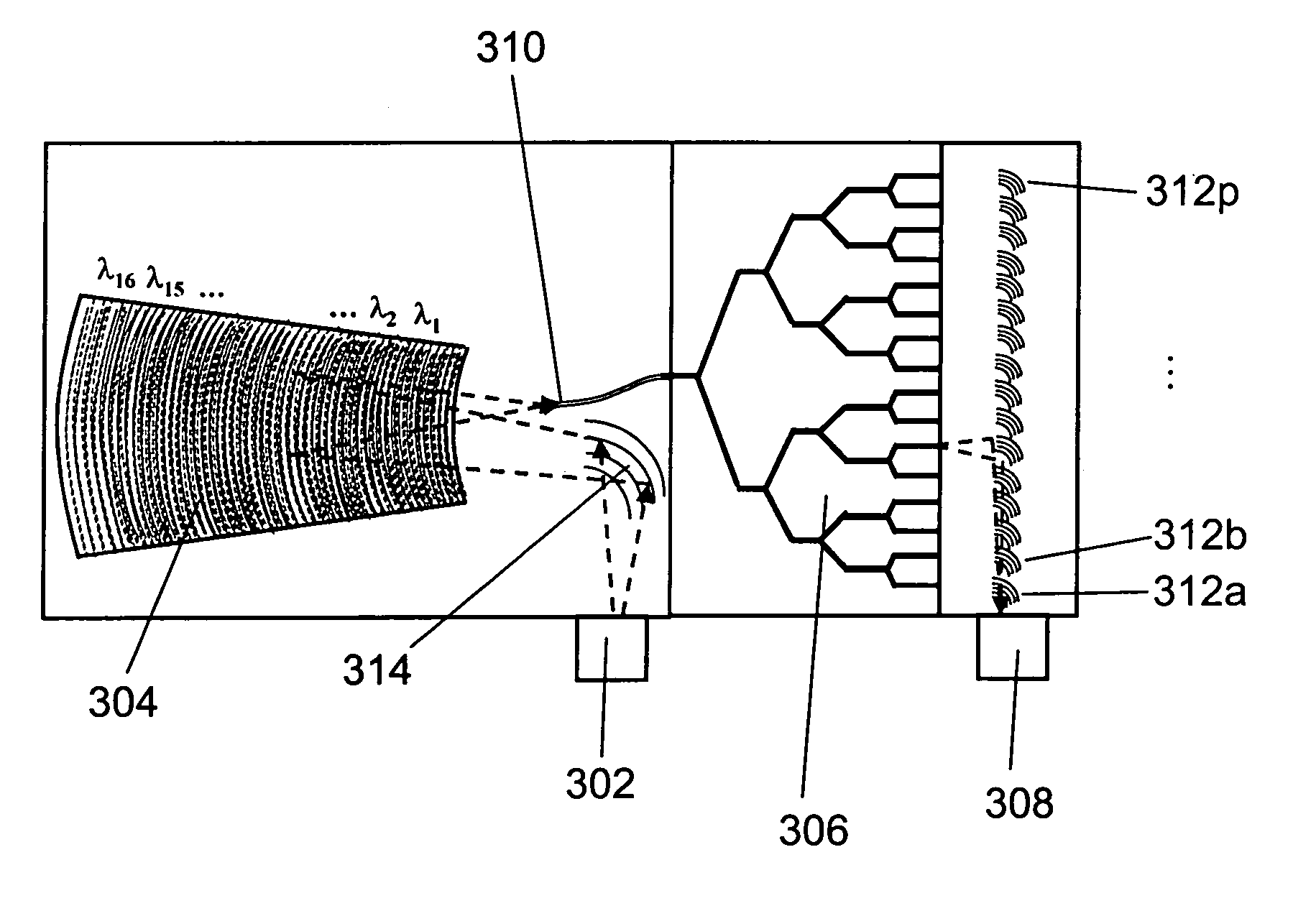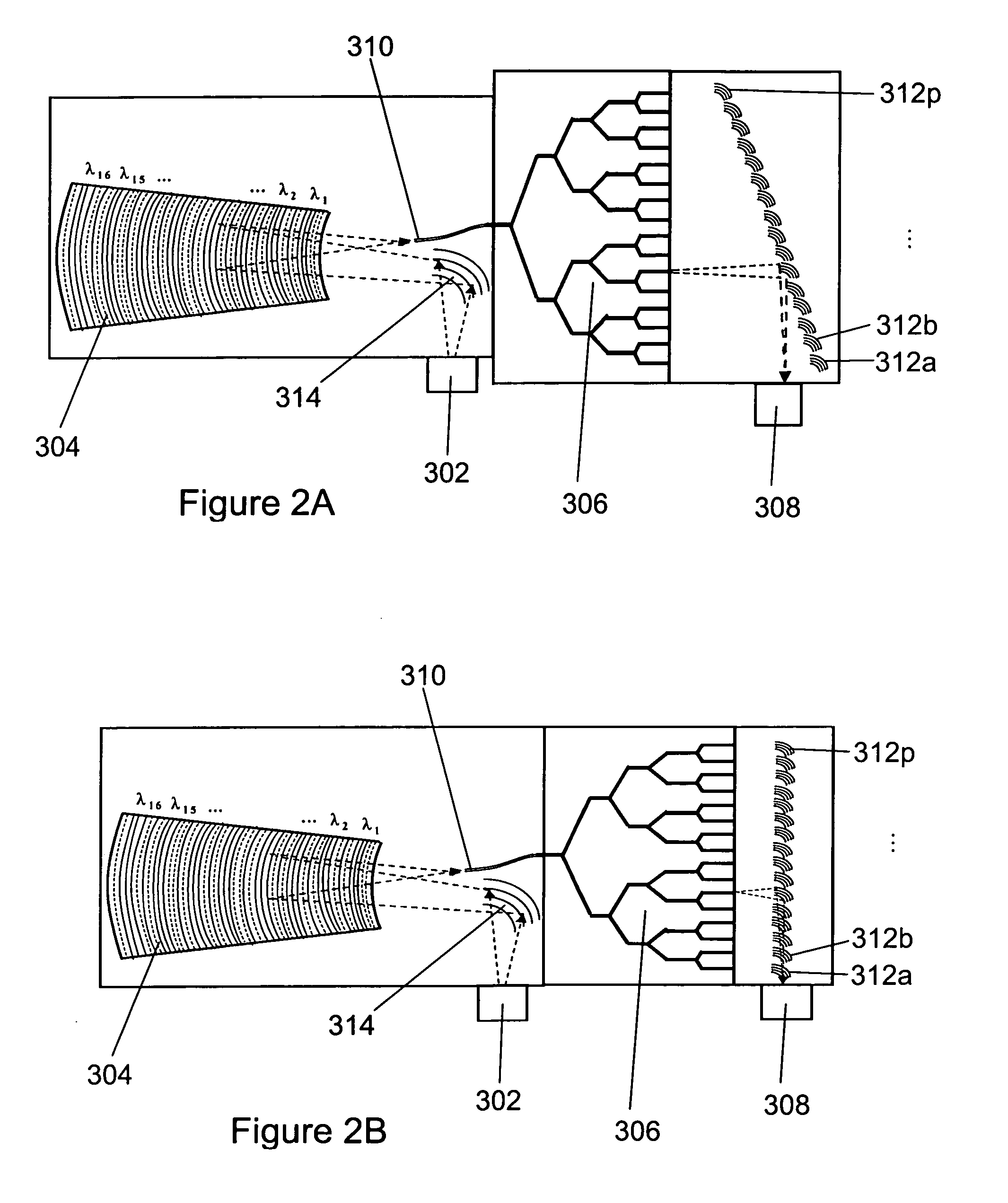Optical time delay apparatus incorporating diffractive element sets
a technology of diffractive elements and optical delay, applied in multiplex communication, instruments, optical code multiplexes, etc., can solve the problems of optical propagation time delay between the input optical port of the switch and the output optical port that varies, and the optical propagation time delay of an optical signal
- Summary
- Abstract
- Description
- Claims
- Application Information
AI Technical Summary
Benefits of technology
Problems solved by technology
Method used
Image
Examples
Embodiment Construction
[0016]A planar optical waveguide is generally formed on or from a substantially planar substrate of some sort, which may be substantially flat or may be somewhat curved, bent, or deformed. The confined optical signals typically propagate as transverse optical modes supported or guided by the planar waveguide. These optical modes are particular solutions of the electromagnetic field equations in the space occupied by the waveguide, with each mode being characterized by its respective amplitude variation along the confined dimension. The planar waveguide may comprise a slab waveguide (substantially confining in one transverse dimension an optical signal propagating in two dimensions therein), or may comprise a channel waveguide (substantially confining in two transverse dimension an optical signal propagating in one dimension therein). It should be noted that the term “planar waveguide” is not used consistently in the literature; for the purposes of the present disclosure and / or appen...
PUM
 Login to View More
Login to View More Abstract
Description
Claims
Application Information
 Login to View More
Login to View More - R&D
- Intellectual Property
- Life Sciences
- Materials
- Tech Scout
- Unparalleled Data Quality
- Higher Quality Content
- 60% Fewer Hallucinations
Browse by: Latest US Patents, China's latest patents, Technical Efficacy Thesaurus, Application Domain, Technology Topic, Popular Technical Reports.
© 2025 PatSnap. All rights reserved.Legal|Privacy policy|Modern Slavery Act Transparency Statement|Sitemap|About US| Contact US: help@patsnap.com



